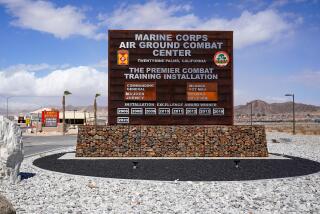SEAL BEACH : Weapons Station’s Survival Pleases City
- Share via
The Long Beach Naval Shipyard is right next door, but Seal Beach residents are breathing easier because unlike their neighbor, the city’s 5,000-acre Naval Weapons Station was not on the federal base-closing list made public earlier this week.
The 50-year-old weapons base supplies most of the Navy’s surface-to-air missiles to the Pacific Fleet, which is based in San Diego. There are about 150 military personnel on duty with about 660 civilian employees.
The civilian work force has been cut by about 50% during the past four years. About 160 civilian and 15 military personnel will be shifted to the weapons station under the base-closing plan. Navy officials say the move should not be considered an expansion of base activities.
It is not the job loss associated with the base closing that Seal Beach residents fear most. It’s the prospect of seeing an explosion of growth in their small city from the development of thousands of acres of land now owned by the federal government.
“The weapons base is kind of what makes Seal Beach what it is,” said community activist Gordon Shanks, whose late father was an Army depot commander during the early 1950s. “It has eased the impact of major development on the city.”
The Seal Beach Naval Weapons Station is also the site of the National Wildlife Refuge.
Councilwoman Gwen Forsythe said she believes there will be some economic impact to the city if the Long Beach Naval Shipyard is closed. The shipyard employs 3,100 civilian workers, and Long Beach officials have estimated a potential loss of hundreds of millions of dollars if the shipyard is shut down.
“I would not assume that loss of revenue would stop at the border between our two cities,” Forsythe said.
More to Read
Sign up for Essential California
The most important California stories and recommendations in your inbox every morning.
You may occasionally receive promotional content from the Los Angeles Times.










